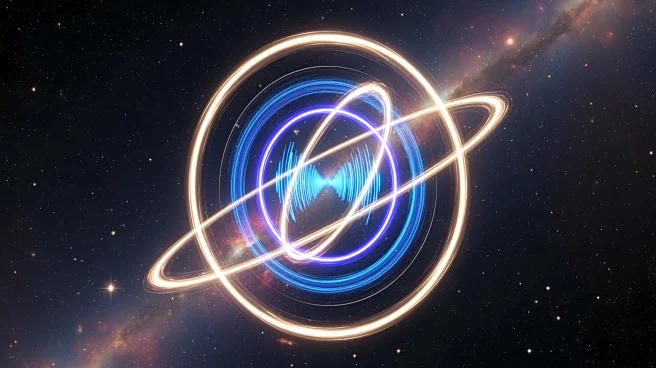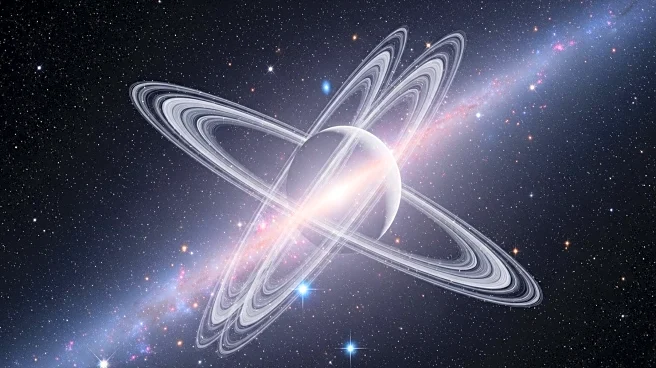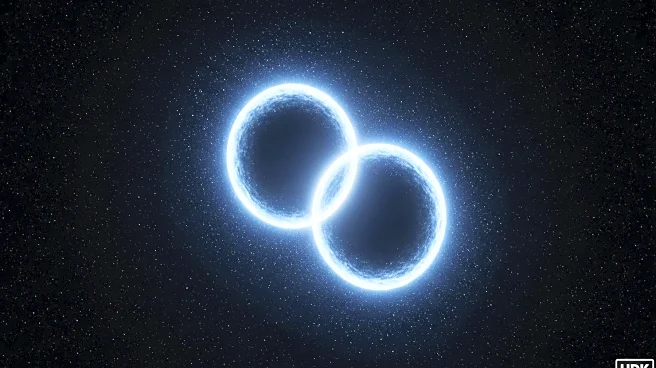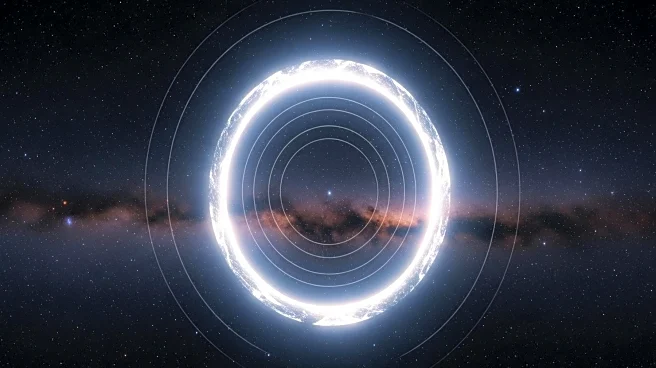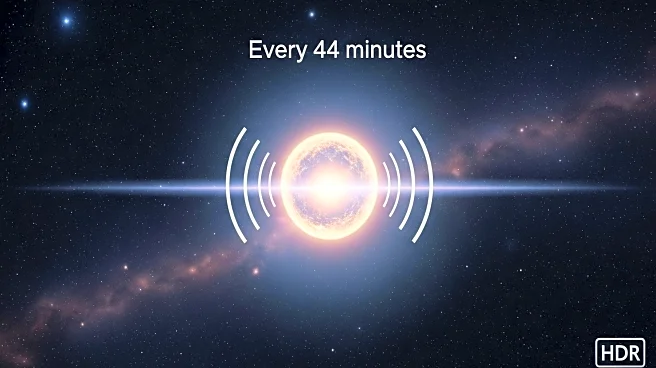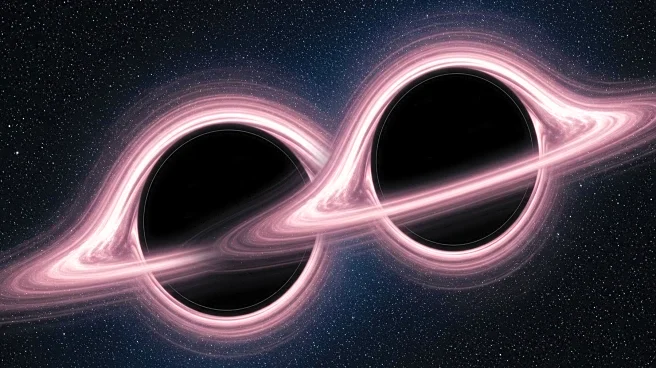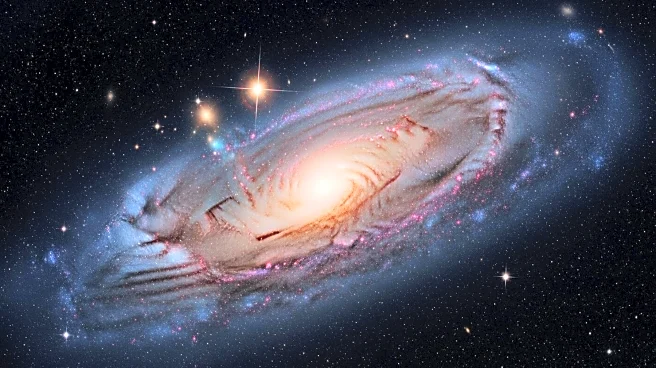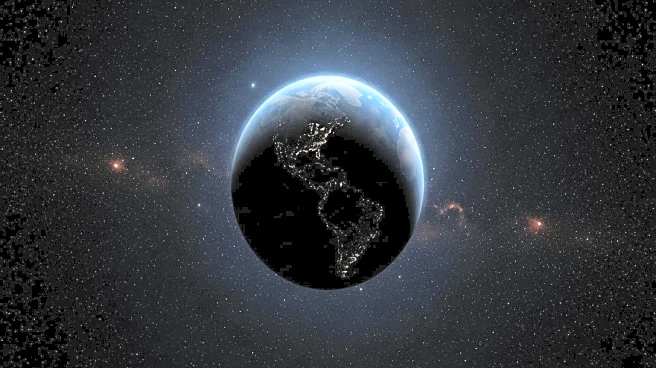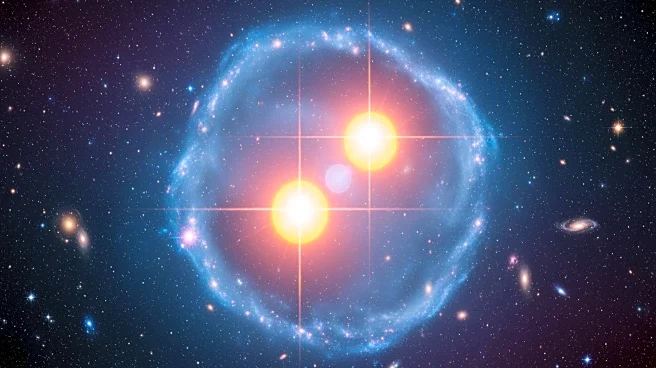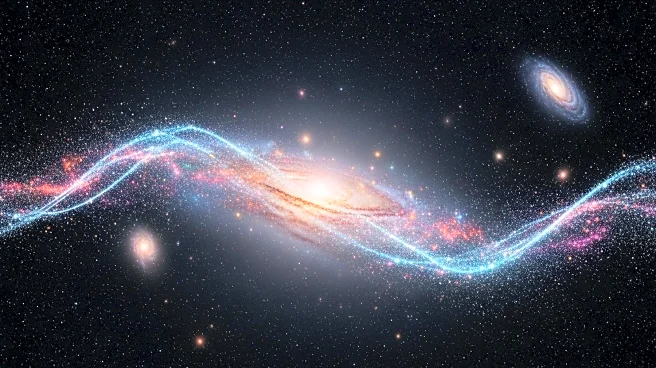What's Happening?
A rare cosmic structure known as an odd radio circle (ORC) has been discovered with the help of citizen scientists. This double-ringed ORC, named RAD J131346.9+500320, is located 7.5 billion light-years
from Earth and is the most distant ORC known to date. ORCs are massive structures composed of magnetized plasma, often spanning hundreds of thousands of light-years. The discovery was made using data from the Low Frequency Array (LOFAR) Telescope, which is the largest and most sensitive radio telescope operating at low frequencies. The rings appear to intersect due to Earth's vantage point, but are likely separated in space.
Why It's Important?
The discovery of this ORC provides valuable insights into the evolution of galaxies and black holes. ORCs may hold clues about how galaxies and black holes co-evolve, offering a unique perspective on cosmic events that shaped galaxies billions of years ago. The involvement of citizen scientists highlights the potential for collaborative efforts in scientific discovery, expanding the reach and capabilities of professional astronomers. This discovery pushes the known boundary of ORCs to nearly half the age of the Universe, providing vital clues about their origins and link to the broader life cycle of galaxies.
What's Next?
Future research will likely focus on understanding the origins and characteristics of ORCs, including their role in the evolution of galaxies. Next-generation telescopes like the Square Kilometre Array, expected to be completed in 2028, will provide more detailed observations of ORCs, helping astronomers learn more about the evolution of black holes and galaxies. The continued involvement of citizen scientists may enhance the discovery process, allowing for more comprehensive studies of these rare cosmic structures.
Beyond the Headlines
The discovery of ORCs challenges existing theories about cosmic structures and their formation. It raises questions about the processes that lead to such massive and faint structures, and why they are only detectable through radio light. This could lead to new models and theories in astrophysics, potentially influencing future research and exploration of cosmic phenomena.
